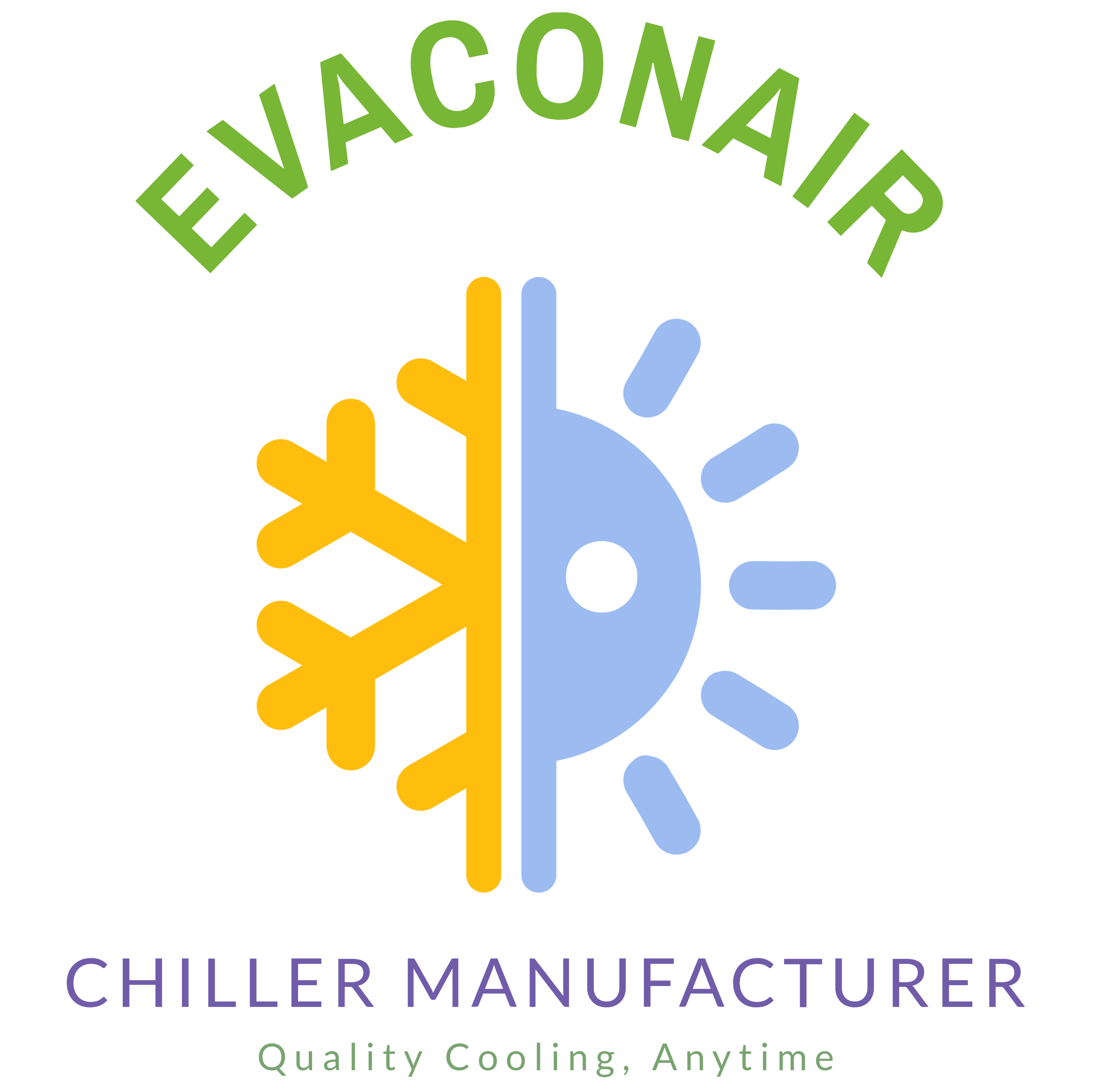Blog
Chillers operate based on a thermodynamic cycle, which involves four key stages to effectively remove heat from a system. Understanding these cycles is crucial for optimizing chiller performance and efficiency.
1. Evaporation Cycle
- Evaporation: In this cycle, the refrigerant absorbs heat from the environment or process fluid in the evaporator. This causes the refrigerant to evaporate and turn into a gas. Discover more about the evaporation process.
- Heat Absorption: The absorbed heat is carried away by the refrigerant as it evaporates. Learn more about heat absorption.
2. Compression Cycle
- Compression: The gaseous refrigerant is then compressed by the compressor, which increases its pressure and temperature. This step is crucial for moving the refrigerant through the system. Explore more about the compression process.
- Pressure Increase: The increased pressure helps in transferring the refrigerant to the next stage of the cycle. Learn more about pressure and temperature control.
3. Condensation Cycle
- Condensation: In the condenser, the high-pressure, high-temperature refrigerant gas releases heat to the surrounding environment, often through a cooling medium like water or air. As a result, the refrigerant condenses back into a liquid. Discover more about the condensation process.
- Heat Rejection: The rejected heat is carried away, allowing the refrigerant to return to a liquid state. Learn more about heat rejection.
4. Expansion Cycle
- Expansion: The high-pressure liquid refrigerant then passes through an expansion valve or throttle valve, which reduces its pressure and temperature. This process prepares the refrigerant to enter the evaporator again. Explore more about the expansion process.
- Pressure Reduction: The reduction in pressure allows the refrigerant to evaporate efficiently in the evaporator. Learn more about pressure reduction.
Summary of Chiller Cycles
- Evaporation: Heat absorption and refrigerant evaporation.
- Compression: Refrigerant compression and pressure increase.
- Condensation: Heat rejection and refrigerant condensation.
- Expansion: Pressure reduction and refrigerant preparation for evaporation.
Applications and Optimization
Understanding these four cycles helps in optimizing chiller performance and ensuring efficient operation. For more detailed information on chiller cycles and their applications, contact EVACONAIR. Our experts can provide tailored solutions for your cooling needs.
Related posts
October 1, 2024
What is the Capacity of a 2 Ton Chiller?
A 2-ton chiller refers to a chiller system with the ability to remove 24,000 BTU/hr of heat. The term [...]
Read moreOctober 1, 2024
What is the Unit of Chiller Capacity?
The unit of chiller capacity is typically measured in tons of refrigeration (TR) or kilowatts (kW). [...]
Read moreOctober 1, 2024
What is Chiller Range?
The chiller range refers to the temperature range and cooling capacity that a chiller can handle. The [...]
Read moreOctober 1, 2024
How to Calculate Chiller Size?
Calculating the correct chiller size is crucial to ensuring efficient cooling for your specific [...]
Read more